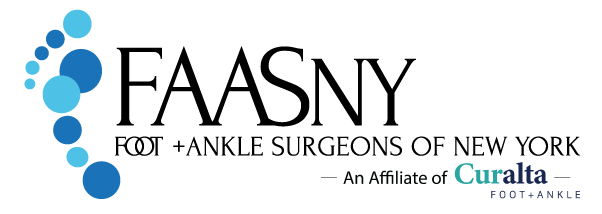
Ankle fractures are a common orthopedic injury that can significantly impact mobility and quality of life. At FAASNY, our ankle surgeon in Rego Park understands the importance of providing accurate and detailed information about different types of ankle fractures and the various treatment approaches available.
Types of Ankle Fractures
- Lateral Malleolus Fracture – This type involves a break in the fibula, the outer bone of the ankle. Typically caused by an inversion injury, where the ankle rolls outward.
- Medial Malleolus Fracture – Involves a break in the tibia, the inner bone of the ankle. Often a result of excessive force on the ankle’s inner side.
- Bimalleolar Fracture – A more severe injury involving fractures in both the medial and lateral malleoli. Occurs due to a high-impact injury or trauma.
- Trimalleolar Fracture – The most severe type, involving fractures in the medial and lateral malleoli and the posterior lip of the tibia. Often associated with ligament damage and dislocation of the ankle joint.
Symptoms of Ankle Fractures
- Pain and Swelling: Immediate pain and swelling around the ankle.
- Bruising: Discoloration due to bleeding under the skin.
- Difficulty Walking: Impaired mobility and difficulty putting weight on the affected foot.
Diagnosing Ankle Fractures
Accurate diagnosis is crucial for determining the appropriate treatment plan. Our experienced ankle surgeon in Rego Park employs the following diagnostic methods:
- X-rays – Provides detailed images of the bones to identify fractures.
- CT Scans – Offers a more comprehensive view, especially for complex fractures.
- MRI – Useful for assessing soft tissue damage, such as ligament injuries.
Treatment Approaches
Non-Surgical Treatments
- R.I.C.E Protocol – Rest, Ice, Compression, and Elevation to reduce pain and swelling.
- Immobilization – Casting or splinting to stabilize the fracture and promote healing.
Surgical Interventions
- Open Reduction Internal Fixation (ORIF) – Involves surgery to realign and stabilize the fractured bones using screws and plates.
- Closed Reduction – Non-invasive procedure to align the bones without surgery.
Rehabilitation and Recovery
Following treatment, a structured rehabilitation program is essential for restoring strength and function. This may include:
- Exercises – Customized exercises to improve flexibility, strength, and balance.
- Gradual Weight-Bearing – Controlled progression to regain the ability to bear weight on the affected ankle.
Preventive Measures
To minimize the risk of ankle fractures, consider the following precautions:
- Proper Footwear
- Strength and Balance Exercises
- Avoiding Hazards
Contact Us
Understanding the different types of ankle fractures and the appropriate treatment approaches is crucial for effective recovery. At FAASNY, our dedicated ankle surgeon in Rego Park is committed to providing the highest standard of care for individuals facing ankle injuries. Contact us today to learn more and request an appointment.
